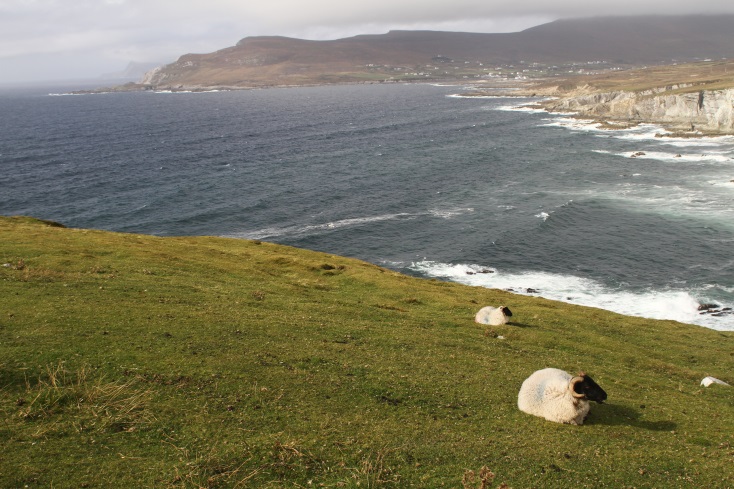
Perched on the edge of Europe, the western county of Mayo is one of Ireland’s largest, though among its least populated. Its bleak, stark beauty makes for stunning scenery with vast swathes of undulating boglands interspersed with craggy hills, looming mountain ranges and waterscapes of every variety, from trickling streams to rushing rivers, from lakes to the great Atlantic Ocean. There was a time when the very mention of the county elicited the desperate response, “Mayo God Help Us!”, such is its wildness. In time the exclamation became almost a term of endearment and was used to playful effect in Heinrich Böll’s memoir Irish Journal, a perennial best-seller that has drawn in its wake droves of Germans and Northern Europeans, visitors and residents who have themselves contributed to the county’s creative flourishing.
During the Great Famine of the 1840s Mayo was particularly stricken. Massive crop failure in the already harsh and difficult land brought about mass death and emigration, reducing Mayo’s population dramatically. Today Mayo is home to fewer than one-third of its pre-Famine numbers.
Having the longest coastline of any county in the country, the sea plays a big part in Mayo’s history. It has grown in importance in recent times, as water and adventure sports, fishing and boating draw tourists to the region. Until the mid-20th century, fishermen relied on small hand-made wooden row boats, called currachs, from which they harvested fish. Many an unfortunate boat didn’t return and fishermen’s bodies were identified by the knotted pattern of their sweaters in cases where bodies washed ashore. Small fishing boats were not the only vessels to come undone on the rocky coast. Many ships, including French General Humbert’s fleet which came in support the Irish during the 1798 rebellion landed here but many came to grief on Mayo’s unforgiving rocks.
The bulk of Mayo’s population reside in the towns, such as Castlebar, the county seat of local government, as well Ballina, Westport, Ballyhaunis, Claremorris and Belmullet. The islands off the coast retain distinct identities and are rich in folk culture. Clare Island guards the entry to Clew Bay from the western side. Achill Island is large with a bridge connecting it to the mainland. Other islands include Inishturk, Caher Island and the Inishkea Islands to the north.
Mayo is home to a new fibre optic cable which was recently laid between here and North America and which is expected to handle up to 30 percent of the world’s telephone calls and is home to a growing number of businesses.
Mayo’s transport network is limited. With large sparsely populated areas, cars are indispensable. Buses are the next best option for getting around the county and train services are minimal. Ireland West Knock Airport is an international airport, which links the west of Ireland to Dublin, London and beyond, though upon arrival a car is needed.
Mayo’s culture and arts scene are in a healthy state. The Irish speaking Gaeltacht is small but alive. A wave of new acclaimed writers have emerged in recent years: Martin Dyar, Mike McCormick and Colin Barrett are notable poets and novelists. One of Ireland’s most distinguished poets, Ulsterman, Michael Longley has written fully one-third of his poems about Mayo, where he spends as much of his free time as possible. Michael Viney’s ruminations on Mayo’s singular natural life captivates readers in The Irish Times every Saturday.
Mayo is a much more hospitable place to visit and/or live than ever before and it is this balance of remoteness, unspoilt beauty and modern convenience which draws emigrants home and non-natives to its alluring land--and for some, keeps them here.